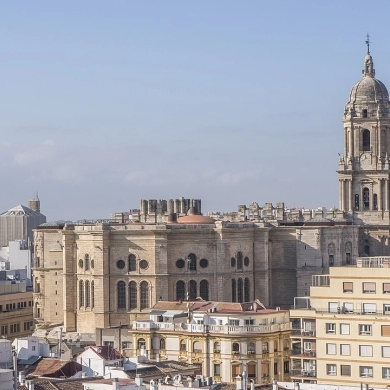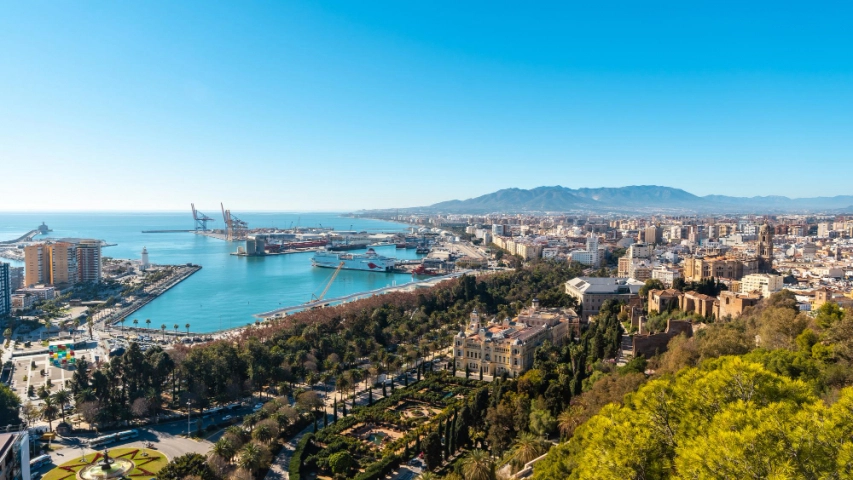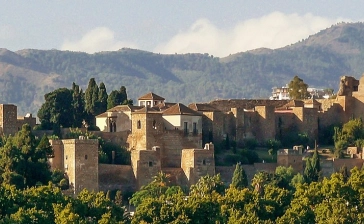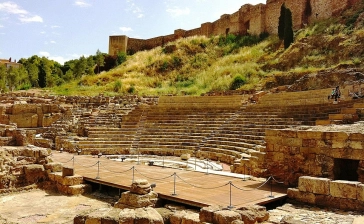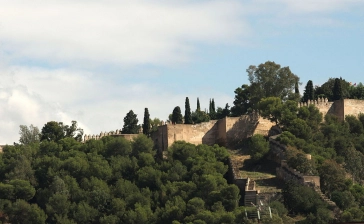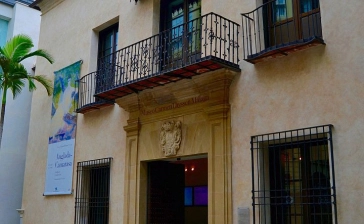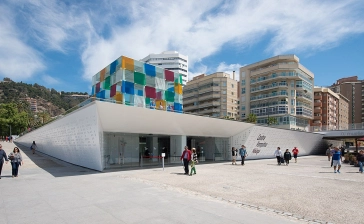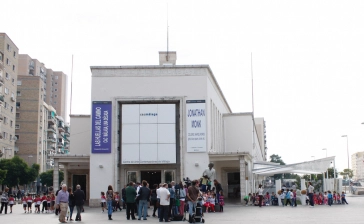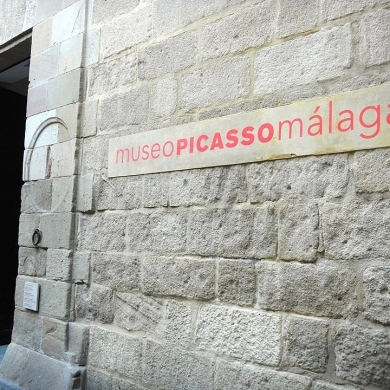Welcome to Malaga, a city full of charm and a virtually unlimited tourist offer for visitors to enjoy their visits, trips, and daily life. The city has made efforts to ensure that most of its iconic sites, beaches, streets, and restaurants are accessible for people with disabilities to enjoy without any accessibility problems.
At www.motion4rent.com, we provide important information and recommendations for accessible places of interest, tourist offices, beaches, excursions, theme parks, restaurants, and other offers for visitors with reduced mobility. Make the most of your stay and enjoy all that Malaga has to offer!
Municipal Tourist Office - Central (Tourism Area)
The central office is located in the Historic Center
- Plaza Marina, 11,29001 Málaga
- Phone.(+34) 951926020
Tourist Information Point - (Next to the Alcazaba)
At the foot of the Alcazaba, next to the Roman Theatre and very close to the Cathedral, there is another tourist information point
- Plaza de la Aduana, 29014 Málaga,
- Phone: (+34) 951 92 60 20
www.malagaturismo.com
Málaga-Costa del Sol Airport:
Málaga-Costa del Sol Airport is a major airport in Spain that connects to many cities around the world. It is located just 8 kilometers from the historic center of the city and receives around 14 million passengers annually, making it the gateway to the entire Andalusia region.
The airport offers a free assistance service for passengers with reduced mobility, with 15 meeting points throughout the airport and surrounding areas to provide adequate assistance for those who need it. Passengers requiring this service must provide information about their special needs when booking at least 48 hours in advance. This service is free of charge and can be requested through https://www.aena.es/pmr/inicio?lang=es or by calling (+34) 91 321 10 00.
Bus:
The bus is a convenient and necessary means of transportation to travel to and within the city. The bus station is centrally located and easily accessible by other forms of transportation, including being located next to the railway station and having a bus route to the airport.
Most of the buses are equipped with ramps to facilitate access for people with reduced mobility. In addition to the ramps, they have space equipped with seat belts and bells to request the stop and/or ramp at the appropriate height, making the bus a accessible option for travelers with mobility issues.
Taxi:
Malaga taxis are white with a blue diagonal stripe. The city has one of the largest taxi fleets in Spain, with over 1,400 vehicles, making it easy to find one.
Most taxis in Malaga accept credit card payments, but it is always advisable to carry some cash.
Malaga also has taxi cabs for people with reduced mobility, which are conventional vehicles that have been modified to meet the needs of people who may travel in wheelchairs. The authorities are working to ensure that at least 5% of the taxi licenses issued are for adapted vehicles. These cabs can be used by anyone, but in cities where the number of adapted cabs is limited, people with reduced mobility have priority in using them.
Metro:
Malaga now has a metro system. In the summer of 2014, the first two lines were opened, connecting the city center with the western part of the city and the university area.
The design of the stations and trains of the Malaga Metro is fully accessible and compliant with safety, accessibility, and functionality parameters to make it easy for people with reduced mobility to access. The stations have elevators and escalators on different levels, making it easy for users to move from street level to the main lobby and platform. The stations also have foot-sensitive pavements.
The fleet of trains that make up the Malaga Metro network is fully accessible, with 100% low-floor platforms, visual and acoustic indicators to facilitate identification of the opening and closing of doors, and two seats for people with reduced mobility.
Port:
Being a Mediterranean city, Malaga has always had a strong connection to the sea and the resources it provides. The Port of Malaga is located in a natural bay and is the second-largest cruise port in Spain. It regularly receives visits from major shipping companies from around the world. The port has modern maritime facilities and spaces that are free of architectural barriers, making it accessible for all visitors.
Accessible beaches in Malaga:
Malaga's capital city has several accessible beaches that visitors can enjoy throughout the year, not just in the summer months. All of the beaches in Malaga are accessible, with parking spaces reserved for people with disabilities and concrete walkways leading to the shore. However, two beaches have additional support services during the summer months, provided by monitors and volunteers. These beaches are:
- Playa de la Misericordia (West zone)
- Playa del Dedo (East zone)
Additionally, the remaining beaches have "autonomous bathing points" where users with reduced mobility can make use of amphibious chairs, flotation devices, and crutches. Information can be obtained from the nearest lifeguard or nurse, or by calling +34 618685088.
These autonomous bathing points are located on the beaches of:
- San Andrés (west)
- Malagueta (east – center)
- Caleta (east)
- Pedregalejo (east)
- Guadalmar (west)
- Palo (east)
The following are the access points to each beach:
The accessible beach point is next to the Paseo de Antonio Banderas, at the height of the Diputación Provincial de Málaga (C/Pacífico).urban bus lines No. 7 and 15 of the EMT make a stop at Calle Luis Barahona de Soto, No. 18 (Bda. Santa Paula). The urban bus line nº 40 (in phase of adaptation) of the EMT makes a stop in C/Pacífico, at the height of the Diputación Provincial de Málaga.
Reserved parking: 7 parking spaces in battery in Pacífico Street (at the height of the Diputación Provincial de Málaga).
Services available: Access ramp, concrete walkway to the shore, lifeguard and rescue post, accessible changing rooms and toilets, accessible children's area, amphibious chairs, device for the blind, support staff for access to the sea and accessible outdoor showers.
The accessible beach point is next to Salvador Allende Avenue, at the height of the restaurants "El Pescador" and "El Tintero", both located on the promenade. The urban bus line 11 of the EMT, has a stop at Doctor Gutiérrez Mata street, nº 2, next to Parque Virginia, about 250 meters from the accessible beach.
Reserved parking: 4 parking spaces in the battery next to the restaurant "El pescador".
Services available: Access ramp, concrete walkway to the shore, surveillance and rescue post, accessible changing rooms and toilets, accessible children's area, amphibious chairs, device for the blind, support staff for access to the sea and accessible outdoor showers.
The accessible beach point is located next to C/Hespérides, corner with C/Moby Dick, and the EMT bus line nº 5 stops at Moby Dick street, corner with Rogelio Oliva street (Hotel Guadalmar).
Reserved parking: 3 parking spaces in battery in Acacias de Guadalmar street, at the intersection with Guadalhorce street.
Services available: Access ramp, walkway to the concrete shore, surveillance and rescue post, accessible changing rooms and toilets, amphibious chairs and accessible outdoor showers.
The accessible beach point is located in Paseo de Antonio Machado, s/n (at the height of Parque Huelin), the urban bus lines nº 1, 3, 5, 7, 9, 10 and 27 of the EMT, have a stop in C/ Héroes de Sostoa, at the height of nº 100. The urban bus line nº 40 (in phase of adaptation) of the EMT makes a stop in Paseo Antonio Machado, corner of C/Tomás Echeverría.
It also has reserved parking spaces.
Services available: Access ramp, walkway to the concrete shore, surveillance and rescue post, accessible changing rooms and toilets, amphibious chairs and accessible outdoor showers.
The accessible beach point is located on the Paseo Marítimo Pablo Ruiz Picasso, next to the surveillance post. The urban bus lines nº 14 and 40 (in phase of adaptation) of the EMT, have a stop at Paseo Marítimo Ciudad de Melilla (Plaza de la Malagueta), about 150 meters from the accessible beach point.
Reserved parking on the promenade Pablo Ruiz Picasso in front of nº 2).
Services available: Access ramp, concrete walkway to the shore, surveillance and rescue post, accessible changing rooms and toilets, amphibious chairs and accessible outdoor showers.
The accessible beach point is located on the Paseo Marítimo Pablo Ruiz Picasso, at the height of No. 33. The city bus lines No. 3, 11, 32, 33, 34 and 35 of the EMT, have stops at Paseo de Sancha (Monte Sancha).
Reserved parking.
Services available: Access ramp, walkway to the concrete shore, surveillance and rescue post, accessible changing rooms and toilets, amphibious chairs and accessible outdoor showers.
The accessible beach point is located in Paseo Marítimo El Pedregal, C/ Bolivia, at the height of the restaurant "Merlo". The urban bus lines nº 3, 11, of the EMT, have stops at Juan Sebastián Elcano Avenue, about 150 meters past the accessible beach point and another stop about 200 meters before.
Reserved parking.
Services available: Access ramp, concrete walkway to the shore, surveillance and rescue post, accessible changing rooms and toilets, amphibious chairs and accessible outdoor showers.
The accessible beach point is located next to C/ Quitapenas, at the height of the Plaza de la Virgen Milagrosa, and the city bus lines nº 3, 11, of the EMT, have stops at Avda. Juan Sebastián Elcano, in front of the San Estanislao school.
Reserved parking
Services available: Access ramp, walkway to the concrete shore, surveillance and rescue post, accessible changing rooms and toilets, amphibious chairs and accessible outdoor showers.
- Walking in a wheelchair in Malaga
Malaga capital is an easy and comfortable city to contemplate and discover thanks to factors such as its good climate throughout the year, flat terrain in most of the center of the capital and the adaptation it has undergone to be accessible and enjoyed by all audiences who choose it as a tourist destination every year.
Strolling through the center: The center of Malaga has most pedestrian streets and only a few with paved asphalt, which makes it much easier to cross in a wheelchair or electric scooter. We propose this pleasant walk through the most emblematic streets of Malaga.
We start in the Plaza de la Merced, where the house where the painter Pablo Ruiz Picasso was born is located. This is one of the most popular squares in Malaga, where there are numerous bars and restaurants. We will continue our tour along Alcazabilla street to contemplate the spectacular views of the Alcazaba and the Roman Theater. If we want to make a stop on the way, we can take a break at the most famous restaurant in Malaga, "El Pimpi", overlooking the Alcazaba from its terrace, and very close to the Picasso Museum of Malaga.
We continue our route along Alcazabilla street until we reach the intersection with Císter street, just where we will find the Palacio de la Aduana, which houses the Museum of Malaga. Moving along Císter Street we will find the Cathedral of Malaga, commonly known as "La Manquita". Then, we continue along Santa Maria street where we can enjoy the stately buildings as well as the beautiful facade of the church of Sagrario. We will turn left at the end of the street and face the last part of the route, on Molina Larios Street until we reach the Plaza del Obispo where the main facade of the Cathedral and the beautiful Episcopal palace are located.
This route is quite flat and with a slight downward slope, the streets through which it passes are all pedestrian and with pavement, approximately the length of the route is 800 meters, in which you will contemplate the main monuments of the city.
The most famous street in Malaga and one of the most famous in Spain, especially photographed at Christmas time for its spectacular decoration of lights. We propose this route that would start in the Alameda Principal at the intersection with Cordoba street. The Alameda is one of the most beautiful and commercial streets of Malaga, thanks to its green vault formed by the branches of its ancient trees. We advance towards Plaza de la Marina, from where we will cross to enter the famous Larios street. At the beginning of the street is located the statue of the Marquis of Larios, we enter the street and where we can find stores of the most famous brands in the world (In the middle of the street we can take an ice cream in the famous ice cream parlor Malagueña Casa Mira) and at the end we will arrive at the beautiful and central Plaza de la Constitución, also very close to the Carmen Thyssen Museum.
This route is quite flat, the streets through which it passes are all pedestrian and with pavement, approximately the length of the route is 500 meters, through which you will pass through the main shopping areas of the city.
Both promenades are easily accessible for people using wheelchairs or electric scooters and have ramps and elevators to access the beach. The promenade Antonio Banderas has several accessible beach points with services such as access ramps, concrete walkways to the shore, lifeguard and rescue posts, accessible changing rooms and toilets, amphibious chairs and accessible outdoor showers.
The Paseo Marítimo Pablo Ruiz Picasso also has similar services and amenities for people with reduced mobility. They are also well-connected by public transport, making them easy to reach for visitors. Both promenades are also great places to enjoy the local culture and cuisine, with many restaurants and bars offering traditional dishes and fresh seafood.
- Paseo del Parque, el Muelle Uno y La Farola
In the center of Malaga we find this park with an impressive variety of tropical plants, fountains and prominent buildings such as the City Hall or the Palacio de la Aduana, among others. It is a pleasant and central walking area of approximately 700 meters in which its terrain will not be an impediment for your wheelchair or electric scooter.
On the south side of the Paseo del Parque we will find the port, one of the most famous areas for strolling in Malaga both in the Palmeral de la Sorpresas area and in the restaurant and leisure area of Muelle Uno, where we can enjoy spectacular views with numerous impressive boats and yachts. In the corner of the Palmeral with the Muelle Uno we can discover the Pompidou Center of Malaga. It is an area that can be accessed comfortably through the Plaza de la Marina or by entering La Malagueta by Calle Velez-Malaga and the passage Doctor Carrillo Casaux. The length of the promenade is approximately one km flat and all concrete.
Finally, it remains to mention one of the most popular walks in Malaga: the Paseo de la Farola, which, as its name indicates, ends at the only lighthouse with a female name in Spain. It begins at the height of the monument to Canovas del Castillo and ends at La Farola. It is a flat walk where you can enjoy the views of the Alcazaba, the Cathedral and the port in its approximately 1 km of route.
- El Balneario (Los Baños del Carmen)
Once inside, the restaurant has ramps for wheelchair access and accessible toilets. The terrace offers stunning views of the sea and the sunset, making it the perfect spot to enjoy a meal or a drink while taking in the surroundings.
The menu offers a variety of Mediterranean and seafood dishes, highlighting the "pescaito frito" (fried fish) and "espetos" (skewers) typical of the area. The service is friendly and attentive, ensuring that all guests have a pleasant experience. Overall, El Balneario is a must-visit destination for those looking to enjoy the beauty of the Mediterranean while experiencing the local cuisine and culture.
Another must-visit. This bodega-bar Malagueña, a seal of quality associated with the name of Malaga, has two possible entrances: one on Calle Granada 62 and the other on Calle Alcazabilla.
Alcazabilla street is where the accessible terrace of "El Pimpi" is located, one of the most pleasant pedestrian streets of the city, in front of the Alcazaba and the Roman Theater and close to the Picasso Museum.
Bodega El Pimpi and the El Pimpi Foundation present the first menu adapted for people with cognitive difficulties within the program "Pon un Pico en tu comercio".
This Bodega is always an emblem of the city and a meeting point for customers of all ages, specializing in local wines and selected tapas. The Salón de los Barriles is the soul of the winery, filled with barrels of crianza wines signed, among other illustrious personalities, by the Picasso family, the painter Barceló, the bullfighter el Cordobés, the Duchess of Alba, Carmen Thyssen, or Antonio Banderas, which give good proof of the history of this place.
